Do you only feel at home with the Grim Reaper breathing hot air against your neck? Do you believe a vacation should constantly remind you of your own body's fragility? Well, then check out these options for tourists in Central American countries, which may cause the faint of heart to implode upon reading.
Volcano-boarding in Cerro Negro, Nicaragua
The Nicaraguan mountain Cerro Negro has erupted 23 times in the past century, but that hasn't stopped people from having a little fun. The 41 degree slope of black ash, it turns out, is perfect for a new extreme sport, called volcano-boarding, in which one flies down the slope on a homemade toboggan. The speed record, set by a tourist, is 54 mph.
Or if that's not enough risk for you, how about a climb to the top of
Santa Maria Volcano, Guatemala, considered one of the five most active volcanoes
in the world. Give family bonding that extra little boost with knowing that you could face a fiery death by scorching ash together at any moment.
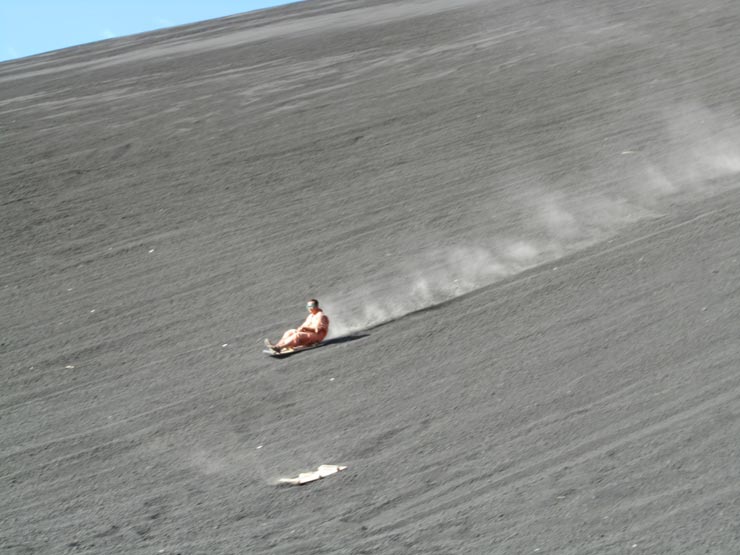 Volcano-boarding in Cerro Negro, Nicaragua
Volcano-boarding in Cerro Negro, NicaraguaZipline through the Monteverde Cloud Forest, Costa Rica
Monteverde is considered to have some of the highest biodiversity in the world, in fact, this one forest is expected to hold around 2.5% of the world's
total biodiversity. It is the home to thousands of different bird, reptile, and insect species, as well as several big cats and monkeys. Not to mention, staying at their on-site hostels is one of the most sustainable tourism sites in the country. On most notes, this place is just beautiful and awesome, not that terrifying, except LOOK AT IT. IT LOOKS LIKE A WHISPER CASTLE OF SECRETS AND GHOSTS.
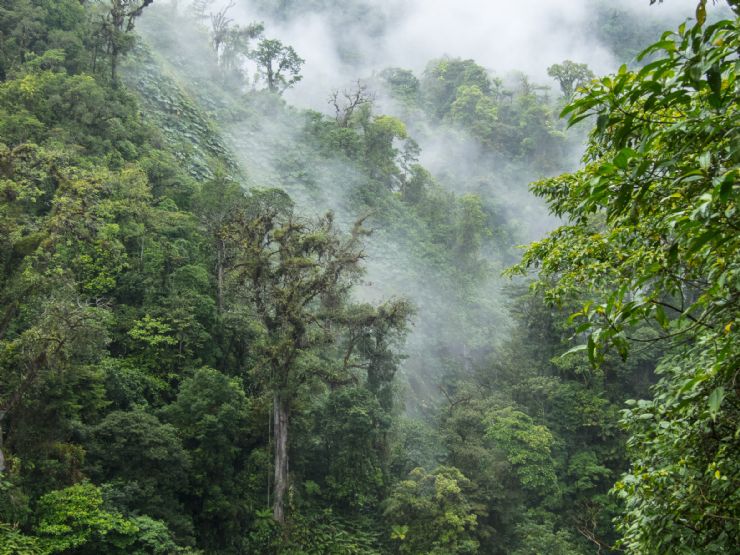 Clouds engulfing the Monteverde Cloud Forest
Clouds engulfing the Monteverde Cloud Forest7 Days / 6 Nights
Starting at $779 per person
Rappel into Cave of Swallows, Mexico
Caves are terrifying. The lack of light, the weird dripping noises, the creatures that look like they could have easily walked out of a Guillermo del Toro fever dream. What else could make this better but plunging straight-first into the nothingness of the world's largest cave? This cave is so huge, ascending back up from your jump takes about
fifteen minutes. If it really wanted to, the cave could engulf the
entire Empire State building into its earthy mouth-hole. And what's saying it doesn't want to?
The spot used to be a popular spot for base jumping, however, was closed to jumping in 2002 to protect local birds (the cave is named after the famous group of swallows that dives into their nests in the cave each evening). However, slowly ascending, and taking in the full effect of all the cave crawlies and mysterious glowing demon oozes (I can only assume), well, they still give that a thumbs up.
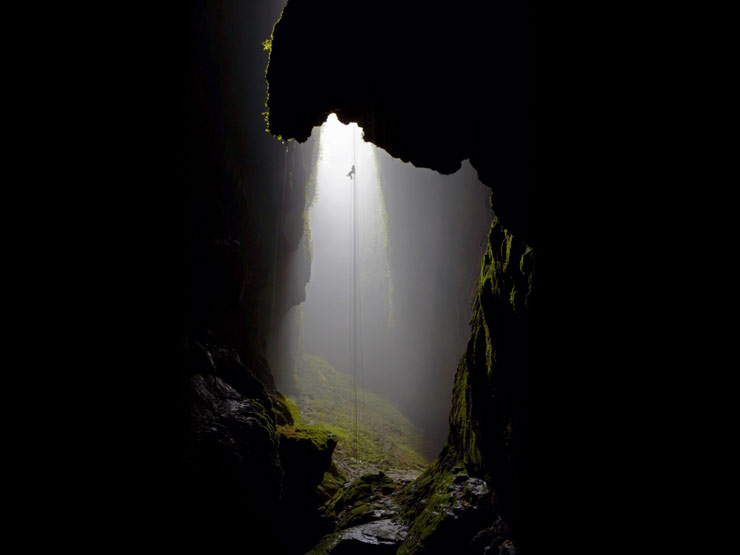 Rappel into Cave of Swallows, Mexico
Rappel into Cave of Swallows, MexicoSimply Survive a Camping Trip in Corcovado National Park, Costa Rica
Corcovado may look on the surface like any other awesome rainforest refuge, however, don't let the average vines and beautiful crystalline water and diverse array of species fool you. Corcovado won't allow just any wildlife in, no, they reserve that right solely to those who can make hearts stop and belly buttons staple shut in pure terror solely with eye contact.
Nearly half of the reptile species in Costa Rica are snakes. That's 135 slithery types of murderous death tubes. Of these, only 17 are poisonous, but these few pack enough punch to pick up the slack of the rest of them. Thankfully, few snakebites are reported per year. But for those who are bitten, its national news. Getting bitten is THAT AWFUL. However, here's the most notorious bad boy to watch out for: the Fer-de-lance, considered one of the top 5 most poisonous snakes EVER. Corcovado, of course, is a natural habitat of these big ol' cuties. Hikers and visitors are encouraged to wear
rubber boots, even when in the visitor center.
Even when in the visitor center. Not to mention, swimming is not allowed at its only beach due to its concentrated population of
bull sharks and crocodiles. Think that's a beautiful majestic
Pygmy Anteater? Well, it probably is, but if its in Corcovado, it probably thinks only about murder. Oh, Corcovado, how you try to fool us with your beauty.
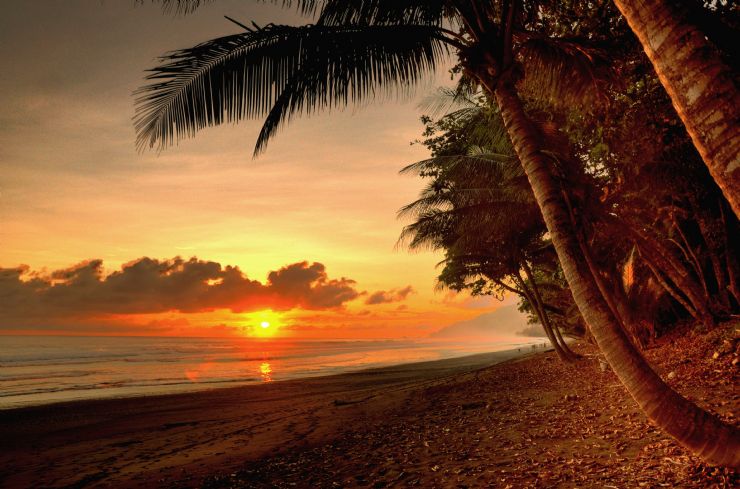 The majestic Corcovado National Park
The majestic Corcovado National ParkSwim with Sharks on Cocos Island, Costa Rica
Costa Rica is home to 50 different types of sharks, including the feared bull shark, hammerhead, and tiger shark, an white tip reef shark. All four are known for their particularly aggressive personalities.
Cocos Island is renowned by scuba lovers for its high population of hammerheads, as it is not uncommon to spot them in groups upwards of two dozen. PBS commented in a recent documentary that the island perhaps has more sharks per cubic meter than any other place in the world.
Additionally, the island is home to a huge population of manta rays, thousands of fish species, and the occasional whale shark, the largest fish in the world. So go ahead, purposefully drop yourself into a menagerie of teeth with fins. I'm just going to stand over here nicely with my hands in my pockets where they can't get them.
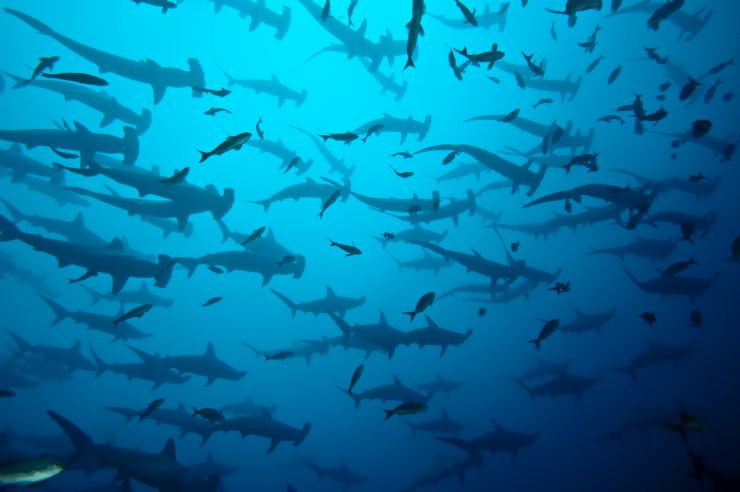 Large school of hammerhead sharks at Coco Island
Large school of hammerhead sharks at Coco Island
